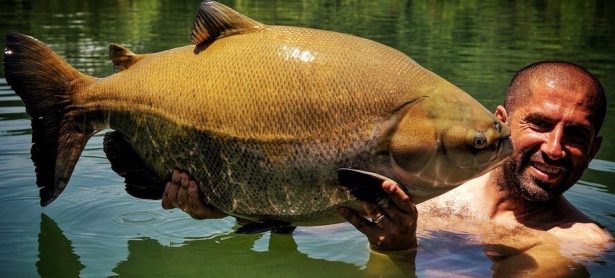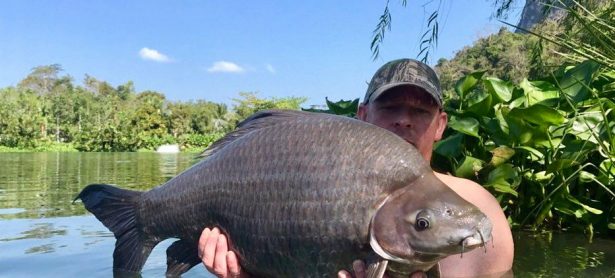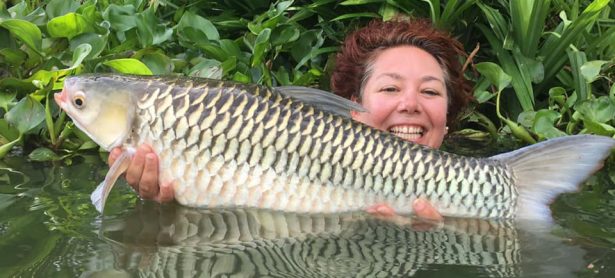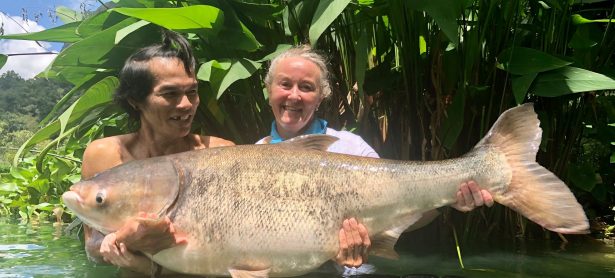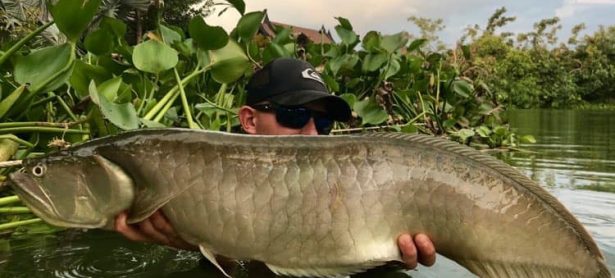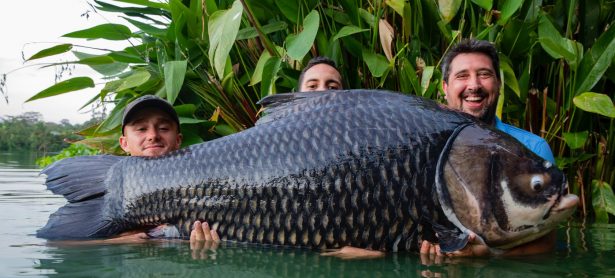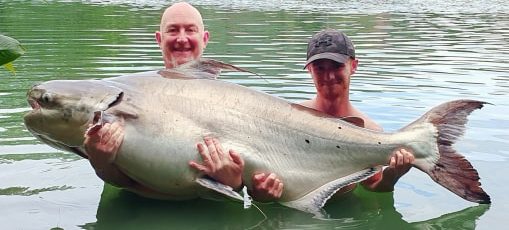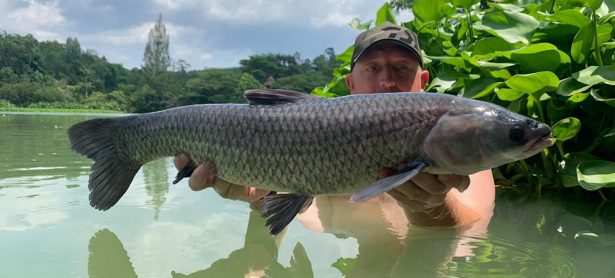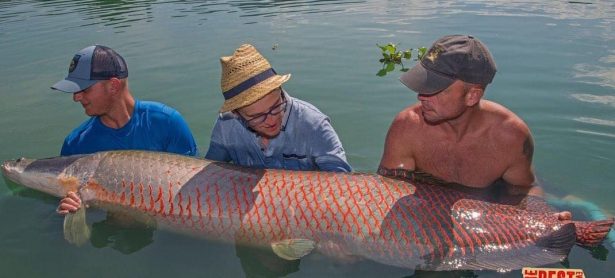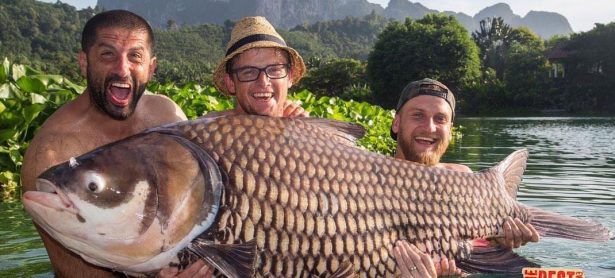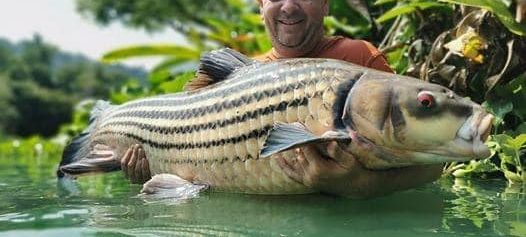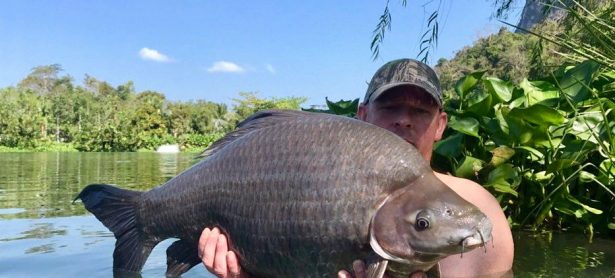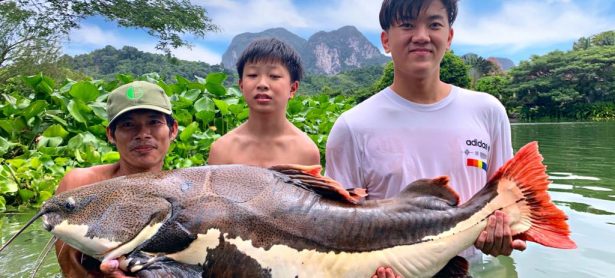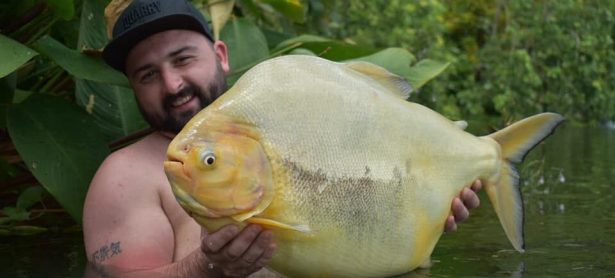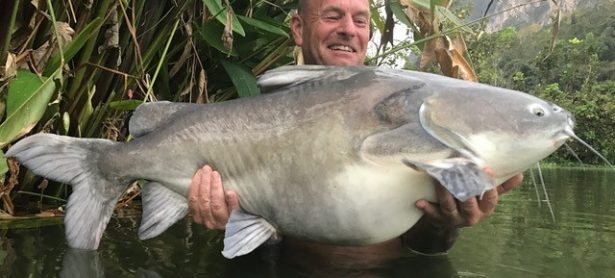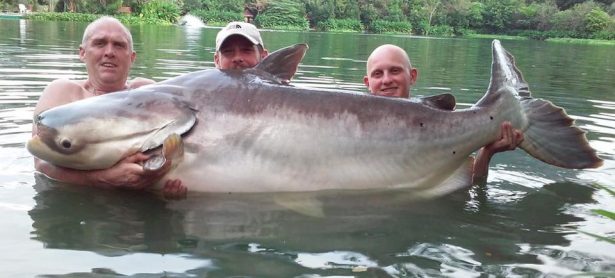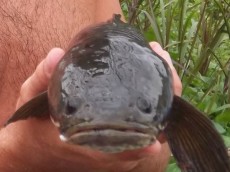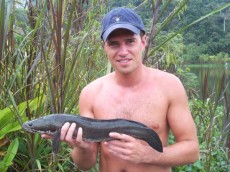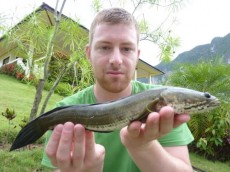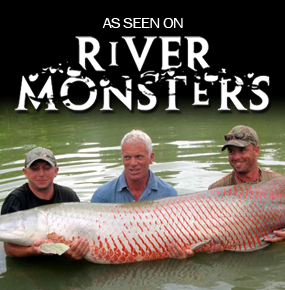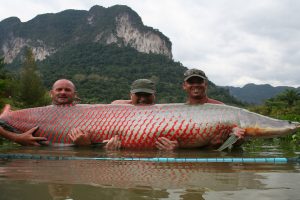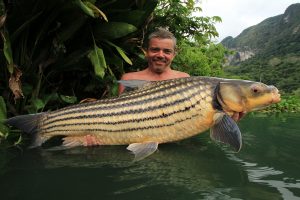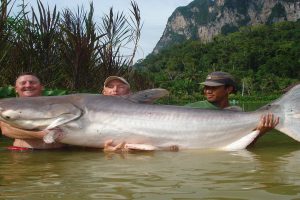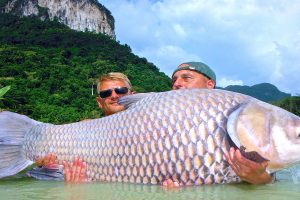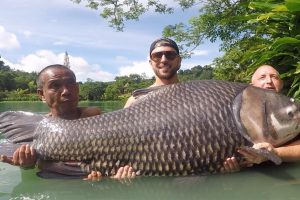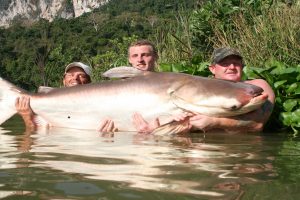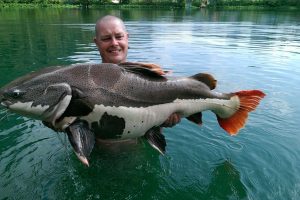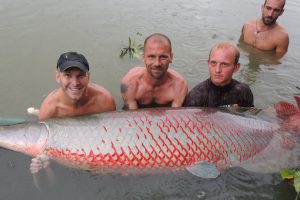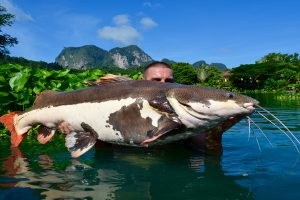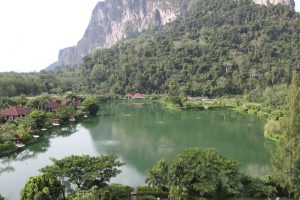 Name: Striped snakehead (chevron snakehead).
Name: Striped snakehead (chevron snakehead).
Species: Channa striata.
Thai name: Pla tjon.
Max length: 1m.
Max weight: 5kg (10lb).
IGFA record: 7lbs.14ozs-3.6kgs.
Diet: Fish, shrimp, insects, prawns and frogs.
To fish for our striped snakehead the best methods are to use very small fish baits or live shrimp fished below a light float setup in the margins. For these mini battlers ask for a light float rod setup to get maximum sport from these aggressive predators. Alternately the striped snakehead is a great fish to target fly fishing. Use a floating line and shrimp pattern fished along the margins on a floating line. These well camouflaged fish hide in the reeds and hyacinth beds, so fishing as close as you can to these structures will produce the best results.
Takes are vicious as the snakehead devour their prey in one gulp. We do allow 8wt outfits, but no sinking lines to target these fish. Once hooked the striped snakehead make sharp zigzag runs, always trying to reach the sanctuary of the reeds. When they take you under the water hyacinths don’t worry, as these plants are used as natural filters; they are tied back to the banks and are a non-rooting floating weed, so just sink your rod tip and bring the fish back out. These fish are very hardy and apart from the obvious ‘don’t put your fingers in their mouths’, they have nothing else to worry about. They are slippery and wriggle a lot when trying to photograph them, so be prepared, and once you have your picture place them back in the water and they will shoot off in a puff of mud.
General facts on the striped snakehead:
The striped snakehead is native species to Thailand, and they have a widespread range throughout Asia, China, Pakistan, and India, and in recent years they have been introduced to the Philippines and Mauritius. They Inhabit ponds, streams and rivers, preferring the stagnant and muddy water of plains, and can be found mainly in swamps and rice fields. Striped snakehead are brown in colour with faint black bands across their entire body. They have a cream belly, a large head reminiscent of a snake’s head with a deeply-gaping fully toothed mouth, and a large-scaled cylindrical body. When the snakehead eats it is a thrust predator. It will eat its prey all at once, striking and inhaling it whole. The snakehead has adapted to breathe air using a primitive form of a labyrinth organ, which is why they are able to survive in dried-out waterways by burrowing in mud, and as long as their skin and air breathing apparatus remain moist they can live on stored body fats.
There are 29 known snakehead varieties, and they can travel across land and live out of water for up to three days. Out of the water snakeheads rhythmically move their fins and muscular bodies back and forth; the fish equivalent of walking. It is a resourceful adaptation, as in their native Asia they must survive both wet and dry weather cycles like monsoons and droughts. Males and females both help to construct a nest out of water vegetation during breeding time, and the eggs are guarded by the male. They breed up to five times a year, laying 15,000 eggs each time. Because of their unique survival technique they are considered in Asia as a medical tonic, helping to cure illness.
They are an important food fish throughout Asia, also used in culture ponds to control tilapia. In Thailand the snakehead is probably the favourite fish, having a firm white flesh that is almost bone-free, and which is cooked in many ways. The heavy, dark skin is good for soup and usually sold separately. If you wish to sample these fish in our restaurant please order them the day before, as we do not kill any fish in our lake; we buy them from the local market. When snakeheads are kept in captivity they will try anything to escape a confined environment in aquariums; they will charge full force into the glass either knocking over small aquariums or shattering the glass, they often die in their attempt to escape, which is why you seldom see them in captivity. Recently a striped snakehead was reported to have been caught in Lincolnshire, England with a photo to back up the evidence, however it was later proved to be a hoax.



